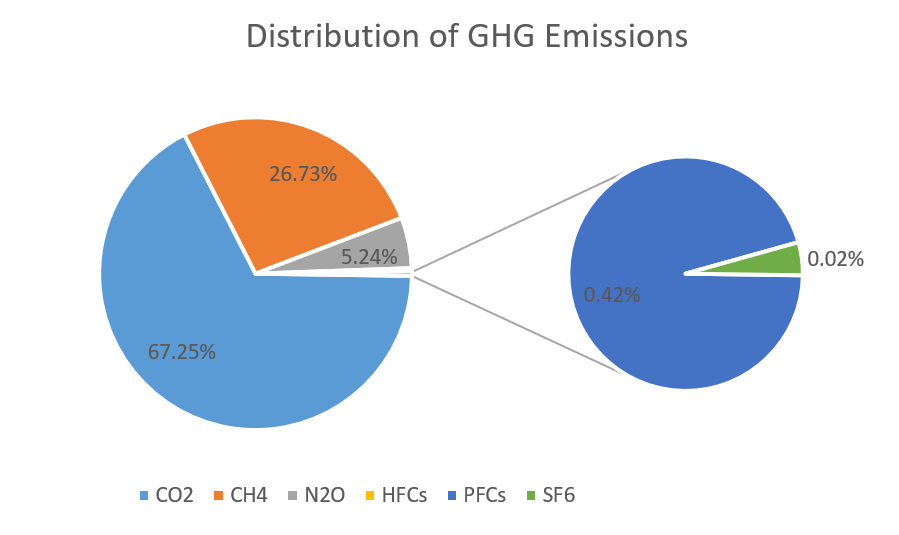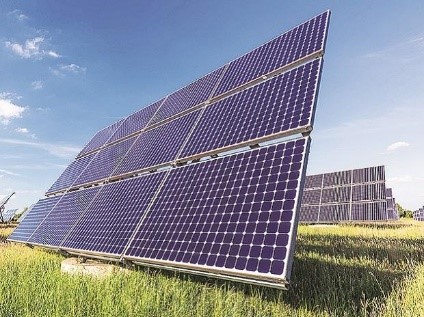Climate Change & Importance of Solar PV
Climate change (refers to seasonal changes over a long period with respect to the growing accumulation of greenhouse gases in the atmosphere) is happening. It is caused in large part by human activities, and it will have many serious and potentially damaging effects in the decades ahead. Greenhouse Gas (GHG) emissions from cars, power plants and other man-made sources—rather than natural variations in climate—are the primary cause. These emissions include carbon dioxide — the main greenhouse gas — which has reached a concentration level in our atmosphere that the Earth hasn’t seen for more than 400,000 years. These greenhouse gases act like a blanket, trapping the sun’s warmth near the earth’s surface, and affecting the planet’s climate system.
The contribution of different GHGs as well as different sectors in the climate change can be represented as below:


Impacts of climate change include:
- Heat waves. Heat waves are long periods of time with above-normal temperatures.
- Heavy Precipitation. Heavy downpours are becoming more common in many locations.
- Sea-Level Rise. Sea level has risen about 8 inches due to the melting of glaciers and ice sheets. The warming of seas and oceans is also making coastal storms more damaging.
- Threats to habitats and animals. As temperatures warm, many plants and animals are migrating to higher elevations or away from the equator. Some animals may have difficulty moving or adapting to new habitats.
- Ocean acidification. Extra carbon dioxide in the atmosphere is absorbed by the oceans, making them more acidic. This can make it difficult for corals and microorganisms that form shells to survive, disrupting the food supply for other sea animals.
- Wildfires. These are large fires that burn vast amounts of forests and brush.
- Drought. Global warming will increase the risk of drought in some regions.
Importance of Solar PV
Solar PV energy is a carbon free Renewable Energy which has a potential to reduce the GHG emission significantly across all the sectors particularly the below sub-sectors of the energy sector and thus contribute in preventing climate change: –
Electric Power Sector
Unlike fossil fuel-based power generation which is highly polluting, Solar PV Energy is zero carbon emission electric power generating sector. India is targeting 100 GW of Solar PV energy by 2022.
Transportation sector
Electric Vehicles (EVs) are being seen as the answer to the climate change in transportation sector mainly. India targets 30% of vehicle run on electricity by 2030.

Agricultural Sector
Agricultural demand for electricity is one of the largest burdens on India’s power sector as irrigation systems are largely undeveloped and farmers are dependent on electricity to power their pumps. Solar can mitigate this entire portion of demand by generating power at the source and converting users into suppliers.

Do share your opinion on the article with us through emails and comments. If you have something to share about the Solar PV Sector feel free to reach out to us. Details are available here.
References:
[1] https://www.downtoearth.org.in/news/energy-sector-biggest-greenhouse-gas-emitter-in-india-says-national-communication-to-unfccc—38150




Pingback: Importance of E-mobility & EV Infrastructure Industry - SolarPost
Pingback: Decarbonization needs to be Everybody's priority - SolarPost
Pingback: Climate Change Challenges - an Opportunity - SolarPost
Thank you a lot for your precious time in writing this educative article
Pingback: Self-Reliant ( Atmanirbhar आत्मनिर्भर) Alternative Energy Source - SolarPost
Pingback: Global Race to Net-Zero Emission is ON; All have to Win! - SolarPost
Pingback: Beyond COP 26- Actions for our Survival - SolarPost